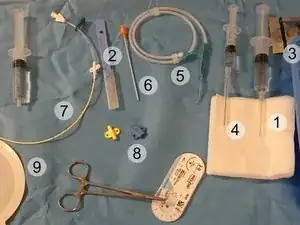Background
A venous catheter is a thin tube made of medical-grade material that is placed in a large vein. According to the CDC, it can be placed in, “the neck, chest, groin, or arm to give fluids, blood, or medications or to do medical tests quickly.” A central venous line or central line can remain in the body for weeks or months as opposed to short periods of time like standard IV’s.
The reason a venous catheter may be placed could be for many reasons including, to administer medicine for treatment, to provide fluid for nutrition, or to aid in tests.
Venous catheters are used in a variety of settings the most common is the ICU of a hospital, long-term care facilities, and dialysis centers.
Identification
There are three main types of central venous catheters. They include triple-lumen catheters, hemodialysis catheters, and introducer sheaths. The following descriptions will help to identify and differentiate between the three types:
- Triple-lumen catheter: This catheter is known for its three infusion channels which allow for multiple therapies at the same time. These catheters typically have two 18-gauge, and one 16-gauge channel and are frequently used in the ICU.
- Hemodialysis catheter: This catheter type has a large diameter of up to 16 French or 5.3mm. This allows for a high flow rate for dialysis therapy. Typical placement is in the internal jugular vein.
- Introducer sheaths: These are the largest of the three catheters at 8-9 French. It will be placed first to enable the temporary placement of vascular devices however it can also be used as a standalone device for rapid infusion.
Additional Information
Image Source: Mikael Häggström/Wikimedia Commons
